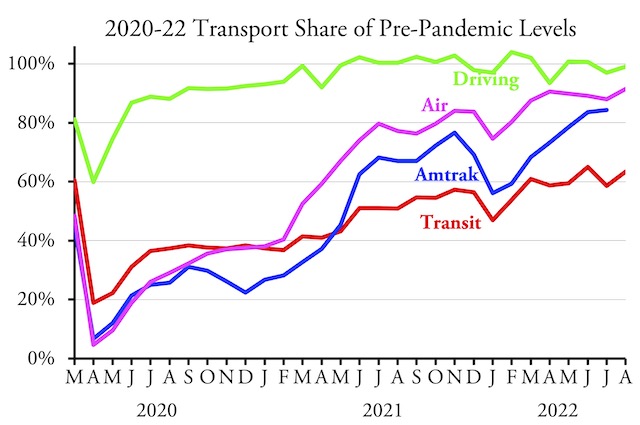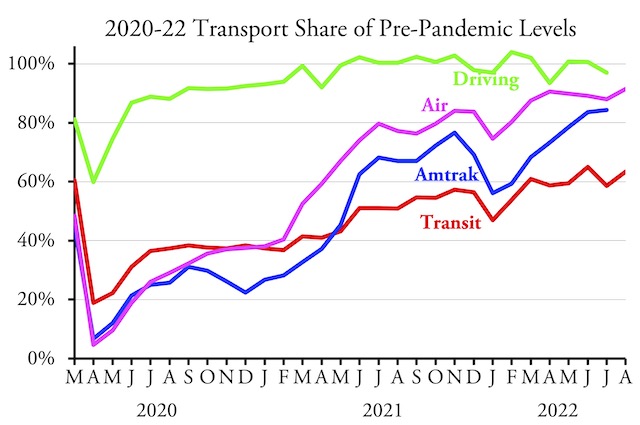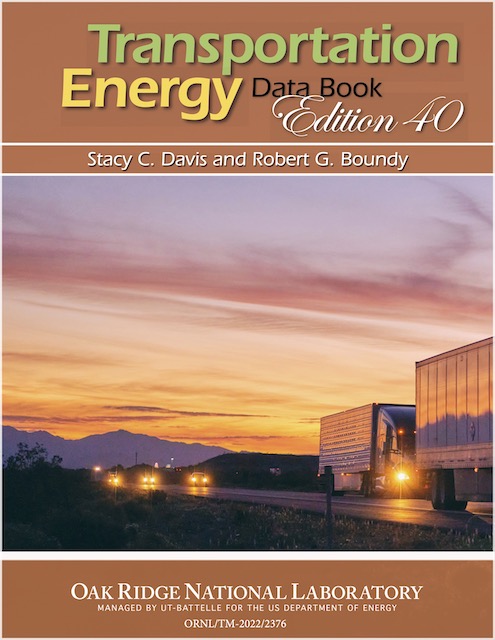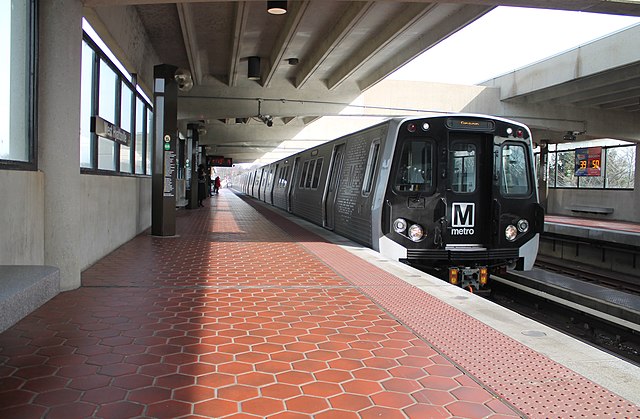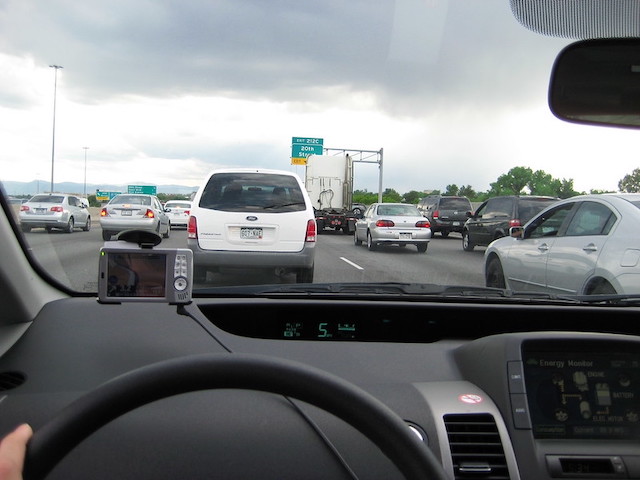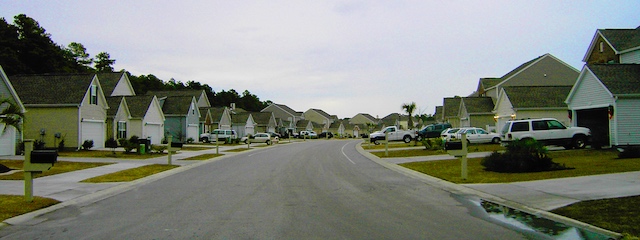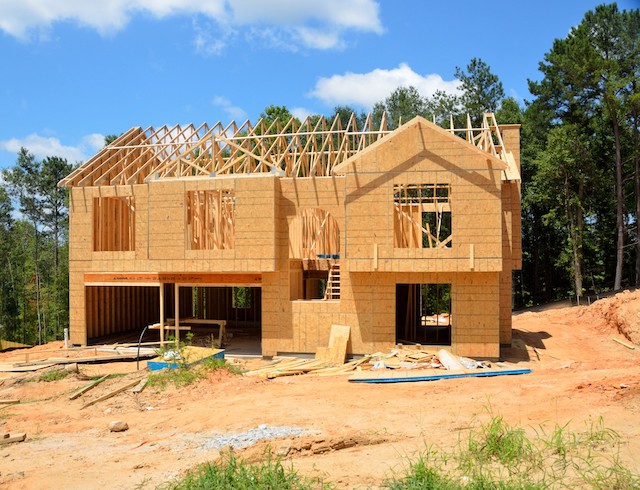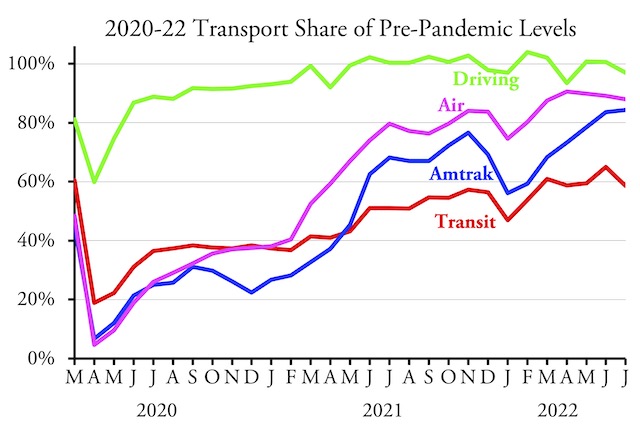Americans drove 101.0 percent as many miles in August of 2022 as they did in the same month before the pandemic, according to data released yesterday by the Federal Highway Administration. This is in spite of the fact that fuel prices in 2022 were at least a dollar more per gallon than in 2019 (more than $3.70 per gallon of regular in August 2022 vs. under $2.70 in August 2019).
Amtrak is unusually late in issuing data for August.
Driving surpassed 2019 levels in 26 states and fell short in 24. Arizona saw a huge gain of 39 percent while Alaska driving grew by 15 percent, Connecticut by 11 percent, and Idaho and Florida by 10 percent. Driving dropped 21 percent in Delaware, 13 percent in Hawaii, and 10 percent in New York and Pennsylvania. Driving grew in both urban and rural areas, but urban driving grew slightly more than rural. Continue reading

